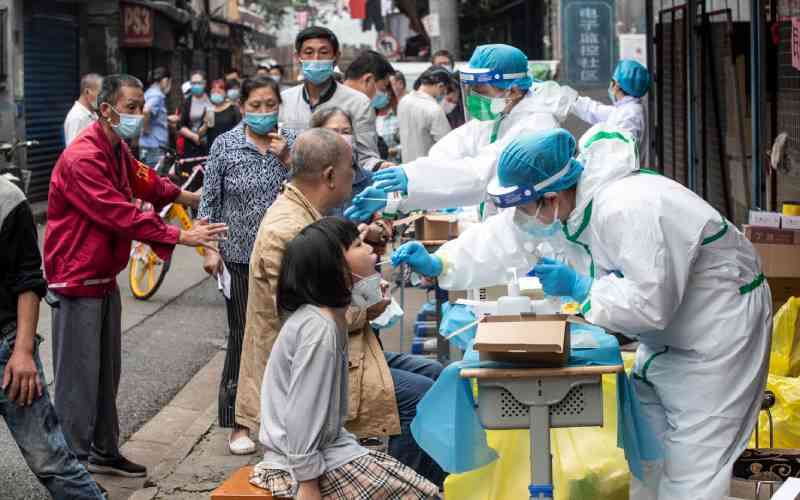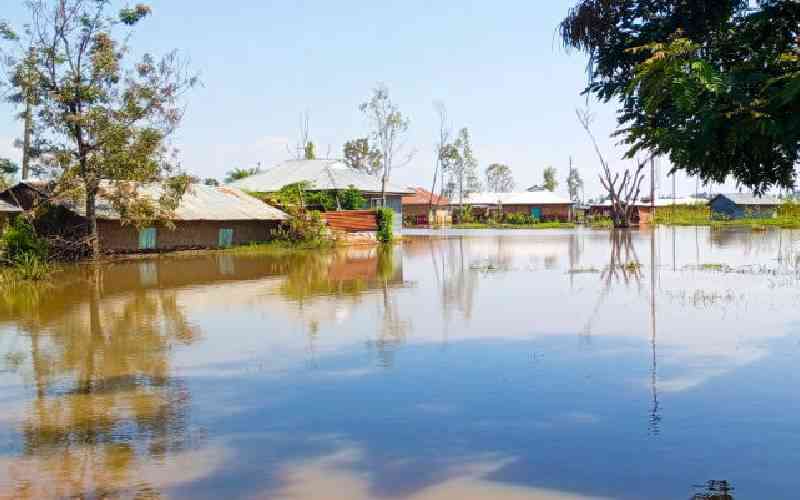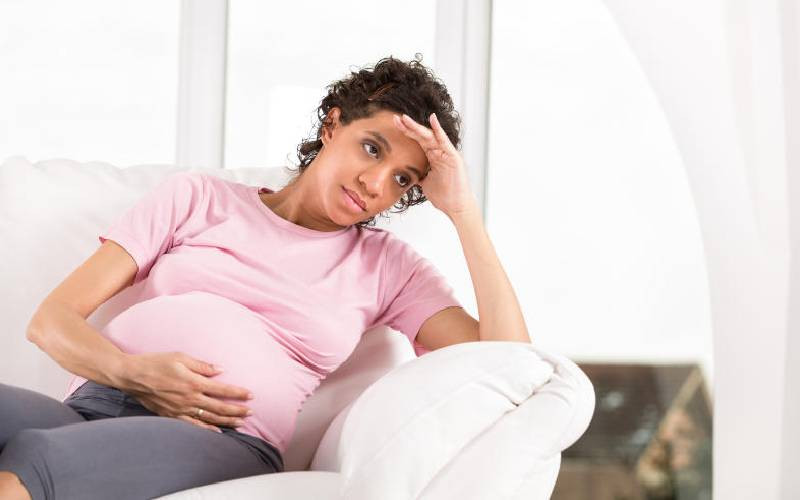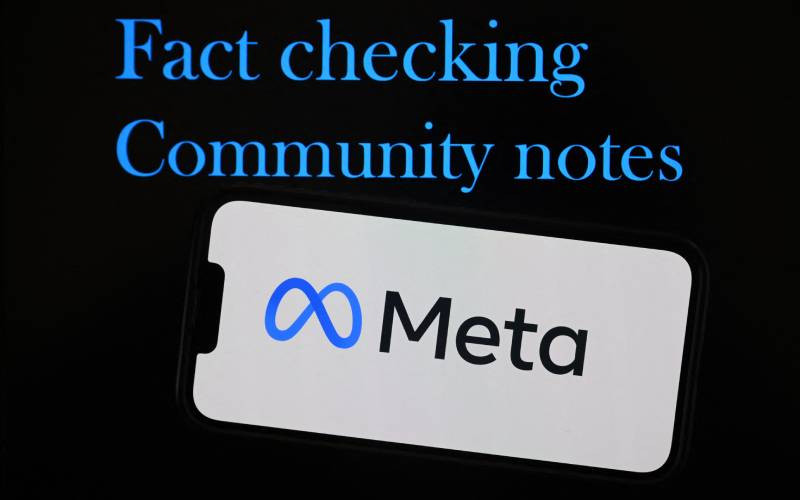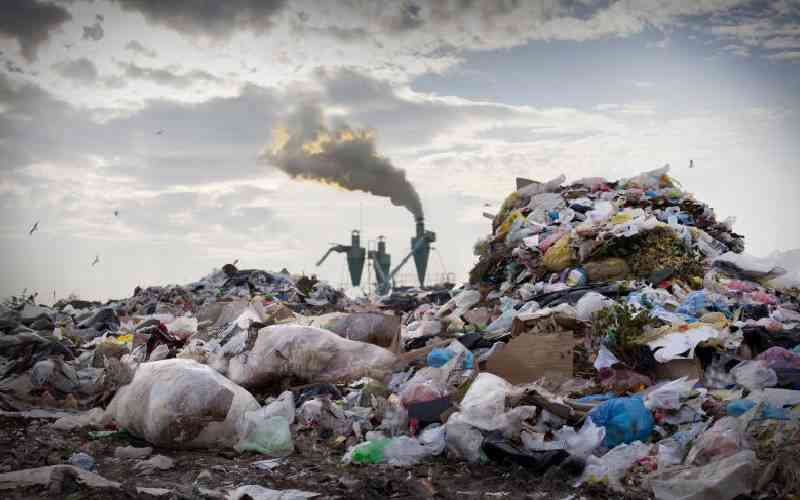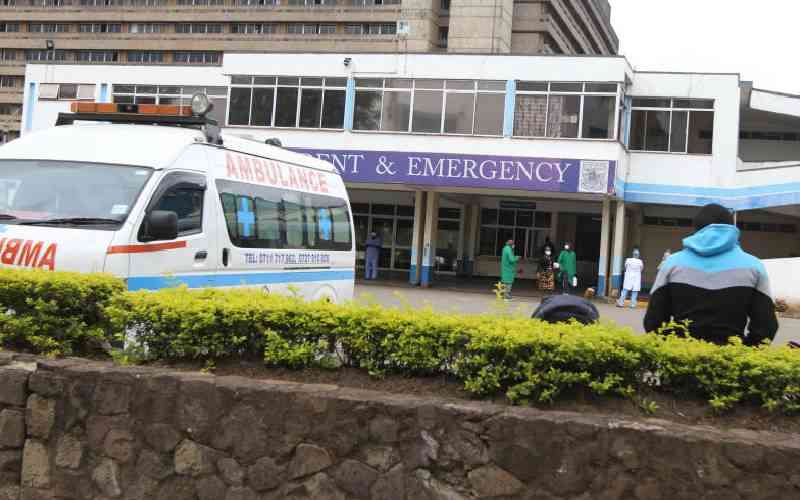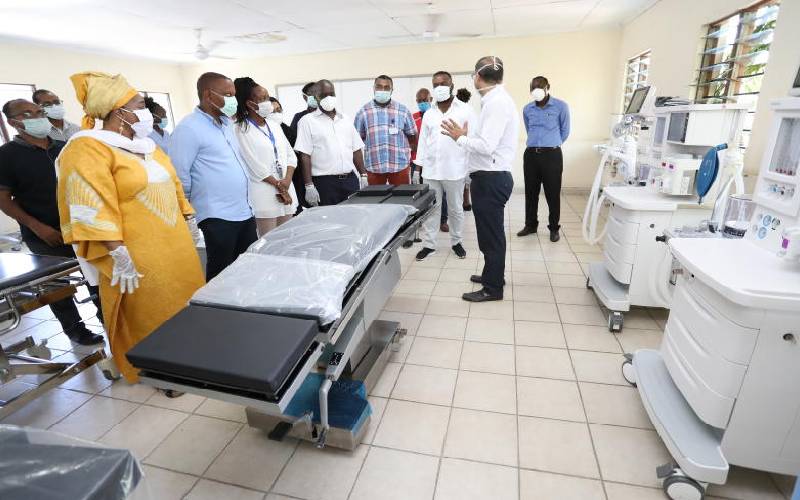
Mombasa Governor Hassan Joho (second right) during an inspection of new equipment and Isolation centre at Coast General Hospital in Mombasa County.
There are only 3,407 beds set aside to care for Covid-19 patients nationally.
The National Coordination Centre for Isolation and Quarantine Centres says 50 health facilities have been identified across the country to accommodate patients diagnosed with the coronavirus and need hospitalisation.
The ICU and critical care beds for Covid-19 patients in public hospitals are 65, but the coordination centre says there are projections to boost the number to 193.
When the first cases of Covid-19 were reported in March, 467 quarantine centres with a bed capacity of 157,850 were identified across the country. The centres include government facilities and hotels.
“Together with the Ministry of Health, Kenya Health Professionals Oversight Authority and other regulatory agencies, we are continuing to identify more facilities that can be used as isolation and quarantine facilities,” said Daniel Yumbya, CEO of Kenya Medical and Practitioners and Dentists Council.
With the number of positive Covid-19 cases rising and expected to peak in August, there have been concerns over the state of preparedness in handling patients.
According to data from the Ministry of Health, there are a total of 518 ICU hospital beds spread across 25 counties. More than 200 of the ICU beds are in Nairobi. Uasin Gushu County as the second-largest number at 55 beds, with 20 of them being at the Moi Teaching and Referral Hospital. Mombasa is third with a 36-bed capacity, and Kisumu has 21.
There are counties such as Kitui, Nyandarua, Laikipia, Turkana, Elgeyo Marakwet, Marsabit and Migori that do not have critical care facilities.
There are 256 ventilators in the country. Recommendations by the Kenya Medical Research Institute (Kemri) in their assessment report released in April said the country needed to urgently invest in 1,511 ICU beds and 1,609 ventilators.
The shortage in medical care facilities has prompted the ministry to look into home-based care. It is meant to care for asymptomatic patients in a bid to avoid overwhelming the healthcare system.
Home-based care
Even as this happens, it is becoming clearer that the country will need to expand the isolation and quarantine facilities, especially for people living in small spaces that may not allow for social distancing and low contact and may not benefit from home-based care.
In his national address on Saturday, President Uhuru Kenyatta said for the current rules and restrictions meant to control the virus to be relaxed, the health care system must be prepared sufficiently to take on a surge in infections.
“Access to testing, isolation and quarantine must be a bare minimum. The capacity for surveillance and contact tracing must be in place,” he said, adding that the next option is for people to take care of the patients in their homes.
Peter K’ochiel, who runs a community-based organisation for youth in Mathare North, says most households in slums do not have the space that would allow patients the social distancing the Government requires.
“Houses have rooms partitioned using sheets and cardboards. If someone here gets sick, they will have to be taken to a government facility,” he says.
Already, government facilities are getting overwhelmed as they try to take care of people in the isolation and quarantine facilities.
Last week, more than 100 people quarantined at the Kenya Medical Training College staged demonstrations after their samples that were supposed to be tested for Covid-19 “got lost”.
The team had arrived from Dubai on May 15 and were placed on the 14-day mandatory quarantine, with a promise that their tests would be done and they would get results on the 15th day.
“It had taken five days after our samples were taken, and nobody was telling us why there was a delay in getting the results. We staged a demonstration and that is when the officials here told us that our samples got lost,” said a section of the team.
A team of policemen had to be brought into the institution to force them to take a second test.
They say they had a series of meetings with the administrators and they were told their samples could not be traced.
“Nobody knows what happened to the first samples we gave. We did another test and still, we have not got the results. It is such an uncomfortable test to undergo, and to have to do it twice can be very depressing,” said one of the returnees.
 The Standard Group Plc is a multi-media organization with investments in media platforms spanning newspaper print
operations, television, radio broadcasting, digital and online services. The Standard Group is recognized as a
leading multi-media house in Kenya with a key influence in matters of national and international interest.
The Standard Group Plc is a multi-media organization with investments in media platforms spanning newspaper print
operations, television, radio broadcasting, digital and online services. The Standard Group is recognized as a
leading multi-media house in Kenya with a key influence in matters of national and international interest.

